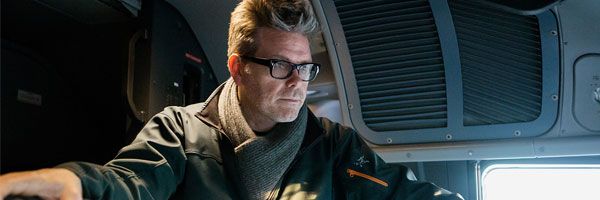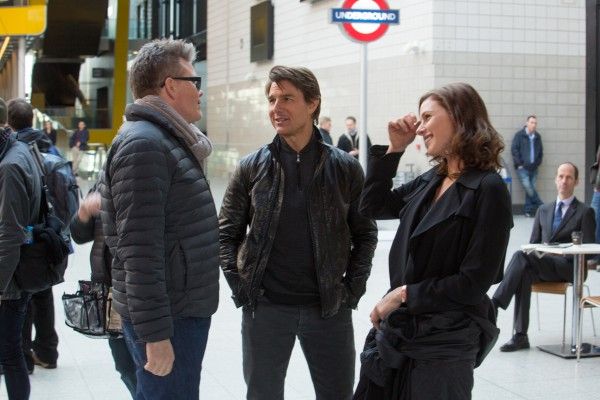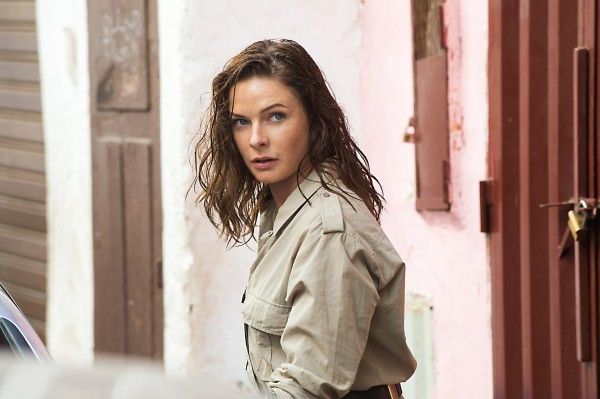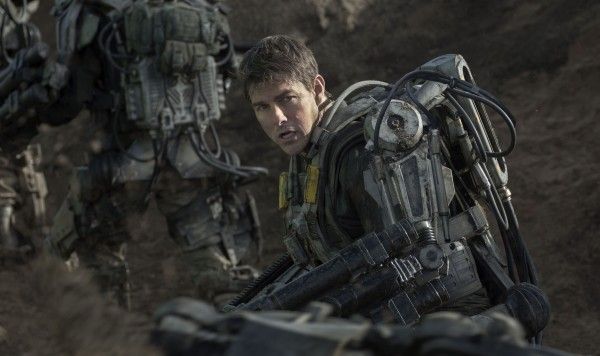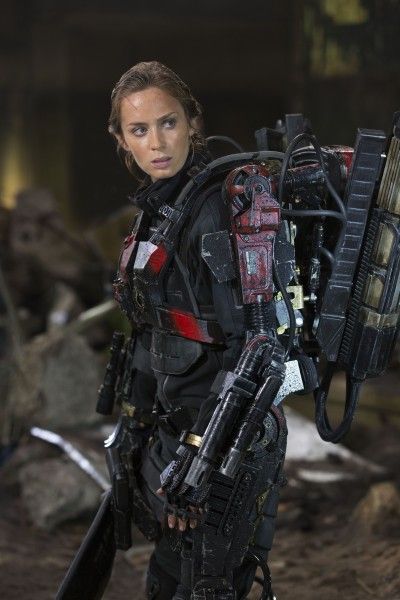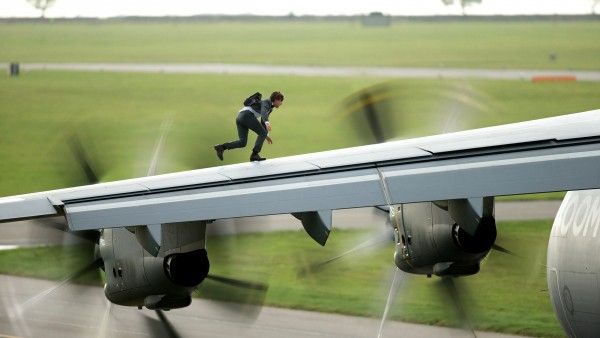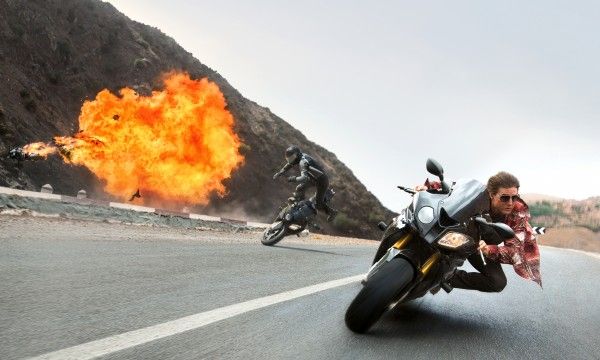Mission: Impossible - Rogue Nation is now available on Blu-ray/DVD, and I recently landed an exclusive interview with director Christopher McQuarrie to help promote the release. During the interview he talked about what he learned while making his first Mission Impossible movie, casting Rebecca Ferguson -- as well as when he first realized she was going to be fantastic in the role, and if she’s coming back for Mission Impossible 6 -- and if he’ll use IMAX cameras on the next one. McQuarrie also spoke about the challenge of coming up with new and exciting action set pieces, the status of an Edge of Tomorrow sequel, and a lot more.
Check out what he had to say below:
Collider: Let me start by saying congratulations on Rogue Nation. One of the things that I think a lot of people don’t realize or forget is that you guys were under an enormous time crunch to get the movie out in theaters in the summer, when you were originally coming out in the winter. Did anything have to be cut or changed as a result of that time crunch?
CHRISTOPHER MCQUARRIE: No, nothing had to change from that. Frankly, it didn’t change the situation that we were in, because we were already under intense time pressure from the very beginning of the process.
On every film you learn something about yourself or about making movies, it’s always a learning experience. What did you learn from making Rogue Nation that you might apply to future movies, say the next Mission: Impossible or other projects you’ll do in the future?
MCQUARRIE: Start with a finished screenplay [Laughs]. You know, we dove into this one with very little time and were figuring out the story as we went and it was just really an intense experience. At the same time, I don’t think we would’ve come up with some of the things that we did if we had sat down and thought them out in advance. Forget all that -- the lesson I learned is that a plan is not a guarantee of success and chaos is not a guarantee of failure.
They worked in the way you’re talking about on the last two Bourne movies as far as I know, and those turned out well, but I think they were also very nervous.
MCQUARRIE: Yeah. It really just comes down to: you can’t panic, you have to get to work every day and work the problem. And if you’re surrounded by good people and you’re really honest with yourself, you’ll be delivered. And ultimately, we never took for granted the kind of movie we were making -- we were really exacting and really painstaking and we were always thinking about the audience every step of the way.
I think that everyone can agree that one of the real surprises and what really blew us all away was Rebecca [Ferguson] and her performance in the movie and the action she did. When did you first realize, “Holy shit, she’s the real deal”?
MCQUARRIE: When we saw her on tape, Tom [Cruise] and I instantly looked at her and knew she was what we were looking for. It was very late in the process, the very last day when we had to make a decision and happened to cross her audition. And then everything after that was just confirmation that she really was amazing.
It was reported yesterday that she was coming back for the sixth installment, can you confirm that?
MCQUARRIE: There is nothing confirmed. I literally just started writing the screenplay and will be working on the screenplay for quite some time. I have not spoken to anybody but Tom, and I just started writing the script. But I certainly would love for her to be back, I would love to work with Rebecca again.
I love IMAX, I’m a huge fan. I love watching movies in this huge screen formats, and on the Mission: Impossible before yours Brad [Bird] shot with some IMAX stuff. Basically, I’m just curious if shooting the next one with some IMAX cameras is already something you’re thinking about in the scripting stages?
MCQUARRIE: Yes, it is. And there’s one sequence in particular that we’re designing with that in mind. We didn’t shoot anything on this movie in IMAX, we upgraded for the IMAX release, but we actually shot everything on 35MM.
One of the things that seems to be ever-changing about the industry is the way digital cameras can push the boundaries, resolution. What have you seen technology-wise with cameras and technology in general –maybe it’s VFX- that you’ve seen and said, “Wow! I want to incorporate this on a future project of mine”?
MCQUARRIE: You know, I used to be a die-hard defender of physical film, which I still am. I love shooting on physical film and I think it’s great. I was very nervous and fearful of its extinction when we were making Edge of Tomorrow, because you felt a lot of the processing was no longer available and the equipment was not being maintained. And then after that there was a resurgence to sort of bring film back, and a lot of filmmakers have been supporting the medium and demanding more film be made. So I was very nervous about that, and what I made friends with in this movie was there were certain sequences in which digital really lent itself to the particular conditions that we were shooting in. And by the end of the film I had found a happy medium, I found a place where you could put both together and in fact each one served the other one quite wonderfully. So I think the happiest thing that I discovered along the way was that there was a world in which both could exist, and in fact, both could exist in the same film.
One of the things that’s always the challenge with a big movie like Mission: Impossible is coming up with new and exciting action set pieces that audiences have not seen before. Obviously, you opened the film with a crazy stunt. Talk a little bit about the challenge of doing these kinds of stunts where people have seen so many things before, and the challenge of doing it again for the sixth time.
MCQUARRIE: Well, the biggest challenge is not coming up with the stunt, the biggest challenge is designing a sequence around it that sort of justifies its existence. And also you have to be thinking in your head, “How is this going to be incorporated into the marketing of the movie?” You know that certain things that you use in the film are going to be shown to audiences five hundred times before they ever sit down to watch the movie. So you have to kind of modulate what can I do to give marketing enough material but that I can still withhold certain things so that it’s fresh and surprising for the audience coming to see the movie. In this case, in the case of Mission, the thing that we withheld from the audience was the underwater sequence, and a lot of that was because of the fact that it wasn’t finished until the day before we premiered the movie. So really for me the trickiest part is how you keep it a secret, how you keep it hidden from the audience until they come and see the movie. I just want them to come and at least see some surprises and not knowing everything about the film.
I want to go backwards for a second. I’m sure you’ve heard this from other film nerds, but I loved Edge of Tomorrow, and there’s been a lot of rumblings here and there about maybe doing another movie, a sequel, Tom has said some things. Do you think it’s one of these films that will ever see a sequel or anything to it, or do you think it’s going to be a one-and-done kind of thing?
MCQUARRIE: We have the idea for the sequel locked and loaded.
Really?
MCQUARRIE: Yeah.
Is it something that you have put in treatment form or written anything, or is it just an idea you guys have discussed?
MCQUARRIE: I don’t know what I can say. I can only say it’s a going concern.
Before my last question I have to say, I really hope you guys do it. My last question for you: Obviously I’m really excited and you’ve kind of hinted at the next Mission: Impossible that you’re currently writing, what can you tease people in terms of what you’re thinking about for the sequel, whether it’d be raising the bar with something, or more character work? Can you tease anything?
MCQUARRIE: Look, we definitely have to raise the bar, we’ve got to do that every time. And we have an idea for one sequence in particular and it’s one we’re very, very excited about. It’s going to be incredibly challenging to do, and we’re very excited.

